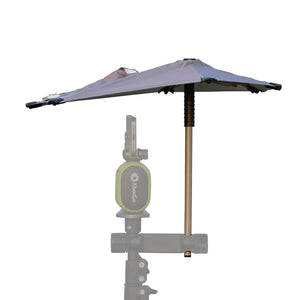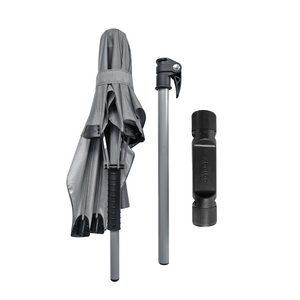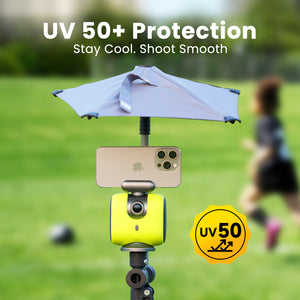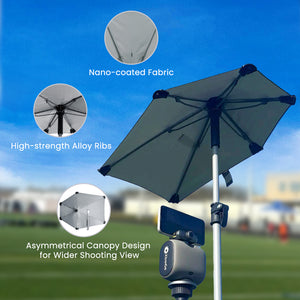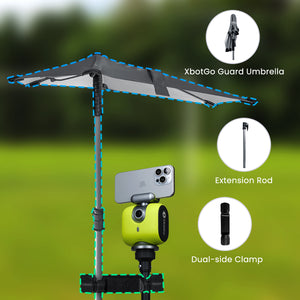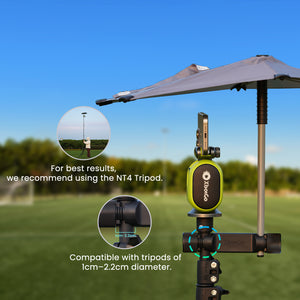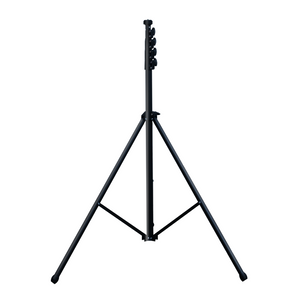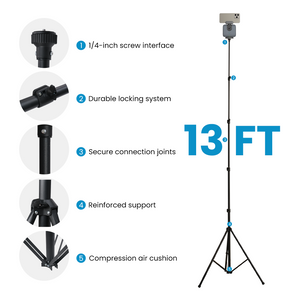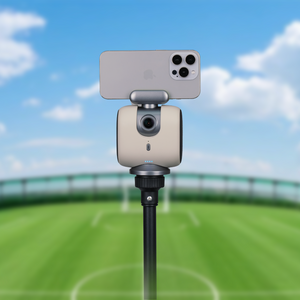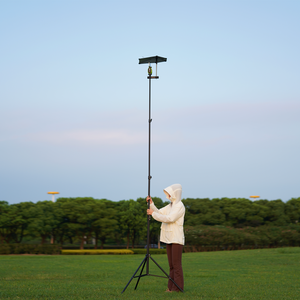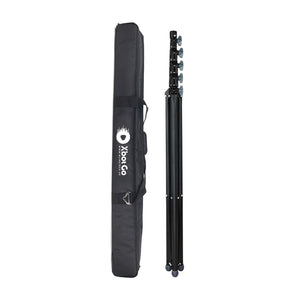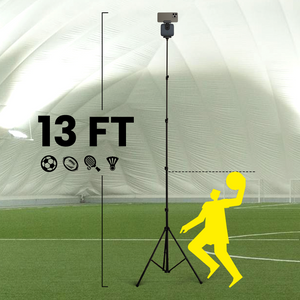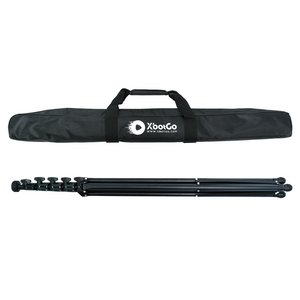XbotGo Chameleon AI Sports Camera
Soccer Field vs Football Field: The Complete Guide
Whether you're a sports facility manager, coach, or simply curious about the differences between soccer and football fields, understanding these distinctions is more important than ever. While both sports are played on rectangular grass surfaces, the similarities largely end there. From dimensions to markings, and from strategic advantages to recording considerations, each field type presents unique characteristics that impact everything from gameplay to facility management.
Understanding the Basics: Dimensions That Define the Game
The most striking difference between soccer and football fields lies in their dimensions. An American football field maintains strict standardization: 120 yards long (including two 10-yard end zones) and 53⅓ yards wide. This consistency exists across all levels, from high school to the NFL, ensuring uniform gameplay conditions nationwide.
Soccer fields, however, embrace flexibility. FIFA regulations allow lengths between 100-130 yards and widths of 50-100 yards, with international matches requiring 110-120 yards by 70-80 yards. Most professional soccer fields measure approximately 115 yards by 75 yards, making them significantly wider than their football counterparts. This width difference—often 20-25 yards—creates nearly 30% more total playing area, fundamentally altering how each sport flows across its respective surface.
The impact of these dimensional differences extends beyond mere numbers. That extra width in soccer allows for expansive lateral play, enabling teams to stretch defenses horizontally and create space through width. Football's narrower field concentrates action, emphasizing vertical progression and creating the intense, collision-heavy gameplay the sport is known for.
Field Markings: Visual Languages of Sport
Each sport's field markings tell a story about how the game unfolds. Football fields feature a precise grid system with yard lines every 5 yards, hash marks for ball placement, and prominent numerals every 10 yards. These markings support football's methodical, position-based progression where every yard gained or lost matters strategically.
Soccer's marking system appears simpler but serves complex purposes. The penalty area extends 18 yards from each goal, creating a zone where goalkeepers can use their hands and where fouls result in penalty kicks. The center circle, with its 10-yard radius, ensures proper spacing during kickoffs. Corner arcs mark where corner kicks originate, while the simpler goal area (6-yard box) designates where goal kicks occur.
These marking differences reflect each sport's fundamental nature. Football's detailed grid supports its play-by-play structure, while soccer's zones facilitate continuous flow and positional play.
Goals and Scoring: Different Targets, Different Games
The contrasting goal structures perfectly embody each sport's character. Soccer goals measure 8 feet high by 24 feet wide—a rectangular target that challenges shooters to beat the goalkeeper. Scoring remains relatively rare, with professional matches averaging 2-3 total goals.
Football's goalposts create an entirely different challenge. Standing 18½ feet apart atop a 10-foot crossbar, with uprights extending another 20 feet skyward, they form a Y-shaped target. Kickers must elevate the ball over the crossbar and between the uprights, earning 3 points for field goals or 1 point for extra point attempts after touchdowns.
Strategic Advantages and Home Field Considerations
Perhaps surprisingly, soccer's dimensional flexibility creates strategic opportunities unavailable in football. Home teams can legally adjust their field size within FIFA parameters to suit their playing style. A team built on speed might maximize field dimensions to create more running space, while a defensive-minded squad might minimize width to compress play.
This tactical dimension extends to maintenance practices. Home teams can influence surface conditions through watering patterns, grass length, and other legal modifications that subtly favor their style. Football's standardization eliminates these variables, ensuring identical playing conditions regardless of venue.
Multi-Sport Facility Challenges
Many venues, particularly at high school and collegiate levels, must accommodate both sports. This creates interesting compromises. The typical solution involves using football's outer boundaries while extending soccer touchlines into what would normally be team areas. This produces a soccer field roughly 120 yards by 65 yards—legal but narrower than ideal.
Converting between sports requires significant effort. Ground crews must repaint lines, with some facilities using different colored paint for each sport. Goal post arrangements present another challenge. Some facilities use removable football uprights, while others position permanent posts behind soccer goals, requiring careful safety considerations.
Modern Technology Considerations
The dimensional differences between soccer and football fields create unique challenges for modern sports technology, particularly automated recording systems. The wider soccer field requires different camera positioning to capture full-field action compared to football's narrower scope. When facilities host both sports, finding optimal camera mounting points that serve both effectively becomes a complex puzzle.
For instance, AI-powered sports cameras system must adjust their tracking parameters significantly between sports—football's concentrated action areas demand different algorithm priorities than soccer's fluid, full-field movement patterns. This technological adaptation extends to broadcast production, where camera angles that work perfectly for football may miss crucial soccer action happening in the expanded width areas.
Recording and Broadcasting Perspectives
The size differential significantly impacts how each sport is filmed and broadcast. Football's narrower field allows cameras to capture more detailed action from sideline positions. The sport's stop-start nature enables frequent close-ups and replay opportunities between plays.
Soccer's width demands different approaches. Cameras must be positioned higher or farther back to capture the full width, potentially sacrificing detail for comprehensive coverage. The continuous action limits close-up opportunities, requiring directors to balance wide-angle context with detailed action shots.
Professional broadcasts solve these challenges through multiple camera setups, but amateur recording faces tougher choices. A camera position ideal for football may miss crucial soccer action occurring in the additional width areas.
Planning and Cost Considerations
Building or converting fields requires careful consideration of these differences. A soccer-specific facility needs approximately 30% more land area than a football-only venue. This translates directly to higher land acquisition costs and increased maintenance expenses.
Lighting presents another consideration. Soccer's wider field requires more extensive lighting arrays to maintain consistent illumination across the larger area. This impacts both installation and operational costs.
For facilities planning to host both sports, designing with soccer's larger dimensions makes sense. A football field can always fit within a soccer field's footprint, but the reverse creates compromises. However, this approach requires accepting higher initial costs for the benefit of future flexibility.
Conclusion
Understanding the differences between soccer and football fields extends far beyond simple measurements. These variations impact everything from player development and tactical approaches to facility management and broadcasting requirements. As multi-sport venues become increasingly common and technology continues integrating into sports, appreciating these distinctions becomes essential for anyone involved in sports facility planning, management, or content creation.
Whether you're designing a new facility, planning field conversions, or simply seeking to understand why these two popular sports evolved such different playing surfaces, recognizing these fundamental differences provides crucial context. The next time you watch either sport, take a moment to appreciate how the field itself shapes the game you're enjoying—from the strategic possibilities created by dimensional choices to the technological adaptations required to capture and share the action with audiences worldwide.
XbotGo Chameleon AI Sports Camera
Capture every moment with AI-powered tracking. Perfect for coaches, parents, and athletes who want seamless footage without manual filming.







 Soccer
Soccer Basketball
Basketball Ice Hockey
Ice Hockey Rugby
Rugby










